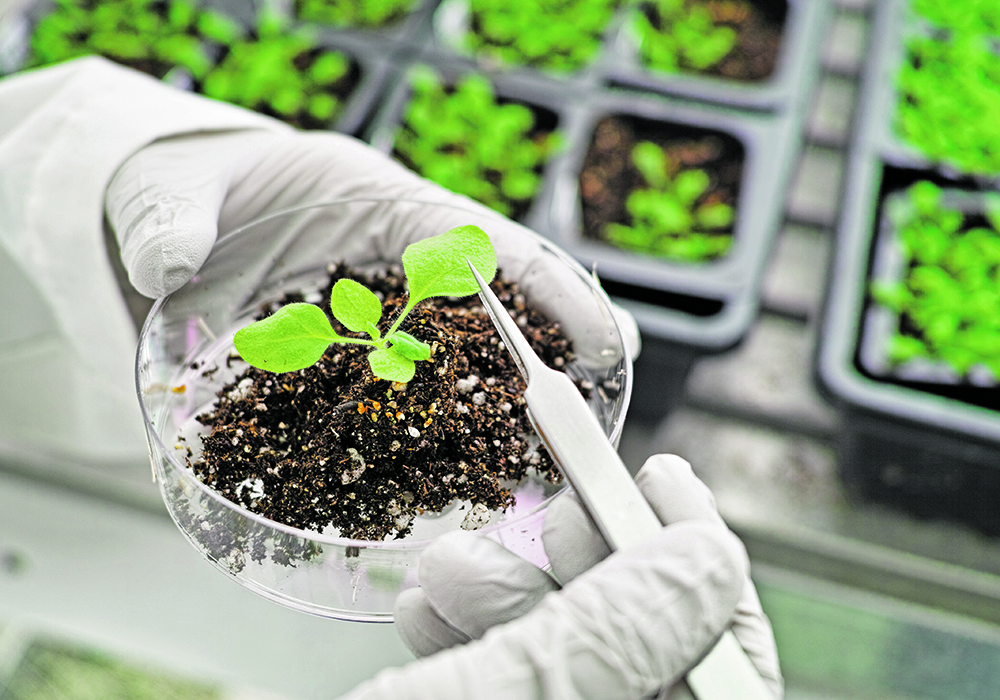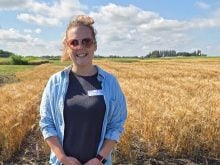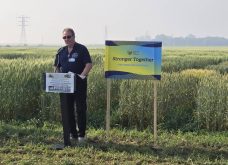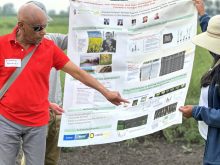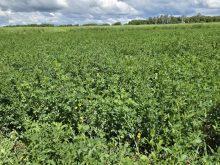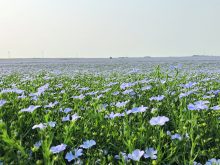Thirty-nine research projects totalling $11.49 million will try to help farmers remain resilient in the face of challenges ranging from a changing climate to antibiotic resistance.
“Research is very important, and what you see is 18 organizations coming together to invest in many situations producer dollars to improve the profitability, sustainability and competitiveness of Alberta production,” said Clinton Dobson, executive director of research for the provincial Results Driven Agriculture Research agency.
RDAR, which provided $7 million of the funding, is part of the Agriculture Funding Consortium. The 18-member group ranges from Alberta Innovates to the Alberta Barley Commission and Alberta Beef Producers, along with the Alberta Beekeepers Commission, Egg Farmers of Alberta and Potato Growers of Alberta.
Read Also

Feds propose overhaul of chronic wasting disease control program
Chronic Wasting disease control program getting updated by Canadian Food Inspection Agency with feedback encouraged from producers.
It also includes the Manitoba Crop Alliance, Prairie Oat Growers Association, Saskatchewan Barley Development Commission, Saskatchewan Wheat Development Commission, and Western Grains Research Foundation. Although there is important research happening in Alberta, it is vital to collaborate with farmer-led organizations outside the province to get a prairie-wide perspective, said Dobson.
The projects approved by the consortium include developing stress-tolerant alfalfa for beef and dairy production in a changing climate, he said. Beef producers in Alberta were hard hit by record-breaking heat waves and drought that affected much of Western Canada in 2021, causing shortages of feed that forced many producers to downsize their herds.
Researchers are seeking to reduce the risk faced by the beef and dairy industries by developing alfalfa varieties that remain robust during conditions that can range from drought to excessive moisture, said Dobson. Climate scientists have linked an increasing frequency of such weather extremes to greenhouse gas emissions.
One project will attempt to better understand how the interactions of nitrogen fertilizer on soil health can help optimize sustainable agriculture. The federal government set a voluntary national target to reduce greenhouse gas emissions from fertilizer by 30 percent by 2030, making the research particularly timely, said Dobson.
“More information on how to use nitrogen efficiently, and its impact on soil health measures, just allows the industry to make more informed and robust decisions on how to use the right rate and form for crop uptake, but also for the soil and the soil microbiome.”
Ottawa recently released a report, What We Heard, detailing consultations about its fertilizer emissions target. Feedback included support for a fertilizer working group involving both government and industry officials to boost timely communication and collaboration, as well as engage producers on a path forward to reducing emissions.
Dobson said other projects funded by the Agriculture Funding Consortium include developing a non-antibiotic treatment for swine dysentery. The disease can cause dehydration and weight loss, as well as death in infected pigs.
There has not only been an increase in the disease in niche pork production involving organic, antibiotic-free farms in countries such as the United States, but antibiotic resistance by microbes on farms in general is also increasingly becoming a concern.
The consortium is also looking at developing molecular protocols for rapid detection of potato pests and pathogens.
Potatoes are a billion-dollar industry in Alberta, with the province supplying much of the seed potatoes produced in Canada.
Alberta was declared free of potato cyst nematodes in 2021, about 14 years after the pest was first suspected in two fields. The issue had affected exports to countries such as the U.S. and Mexico, as well as regions such as Asia.
Dobson said 39 projects were chosen by the consortium. Finalists will conduct research seen as having the greatest impact on producers, including animal health, antimicrobial resistance, emerging threats on diseases, food safety, sustainability and productivity, he said.
Contact doug.ferguson@producer.com


